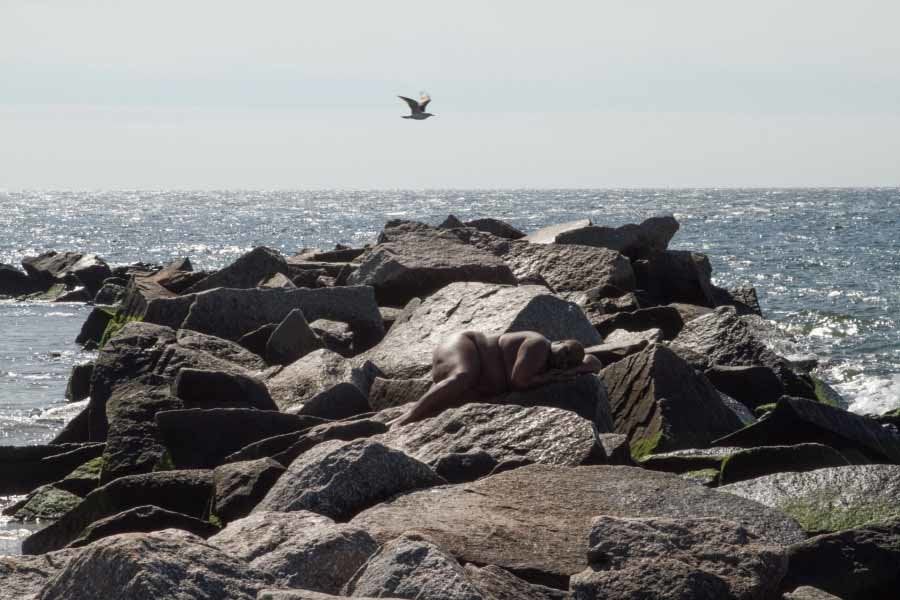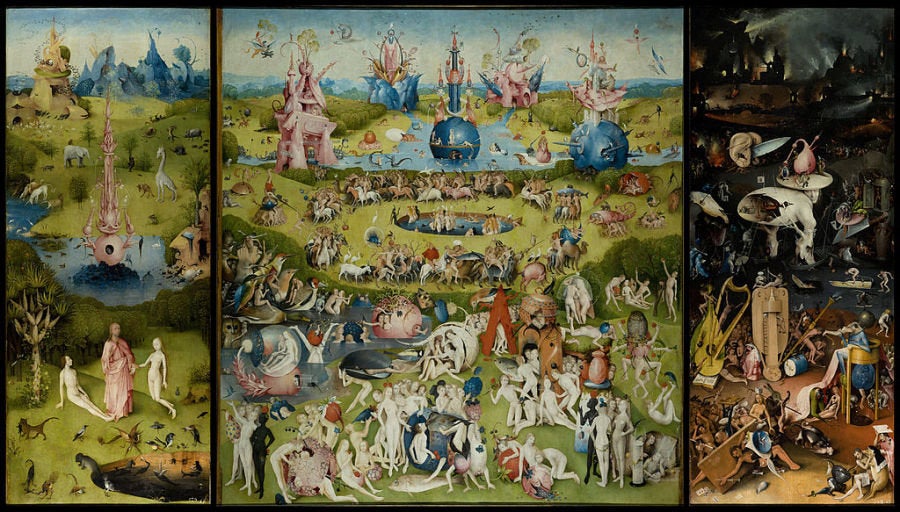Mami Wata, literally translated as "Mother Water," is a spirit revered in West, Central, and Southern Africa, as well as within the African diaspora. She is often depicted as half woman, half aquatic creature, with a snake coiling around her undressed midsection. Pearls, gold, combs, mirrors and other trinkets dangle off her body.
Although Mami Wata is often categorized as female, she is, in fact a "they." The spirits -- plural, though mostly female -- are sometimes male as well. Her popular image is a composite of various cultures and beliefs, patched together from African spirituality, European mythology, Hindu gods and goddesses, and Christian and Muslim saints. She is at once protective and dangerous, representing wealth, sexuality, healing, nature, jealousy and beauty.
According to tradition, Mami Wata was known to kidnap swimmers, pulling them underwater to her spirit realm. Her targets emerged from the encounter with a new spiritual understanding, often resulting in enhanced wealth, calm and understanding.
New York-based curators Dyani Douze and Ali Rosa-Salas were both fascinated with the figure of Mami Wata, and the diverging characteristics encapsulated within her hybrid spirit. "I grew up with the image of Mami Wata in my house. There was a painting of her on our living room wall," Douze explained to The Huffington Post. "Her image was familiar, but I didn’t know the story behind it."
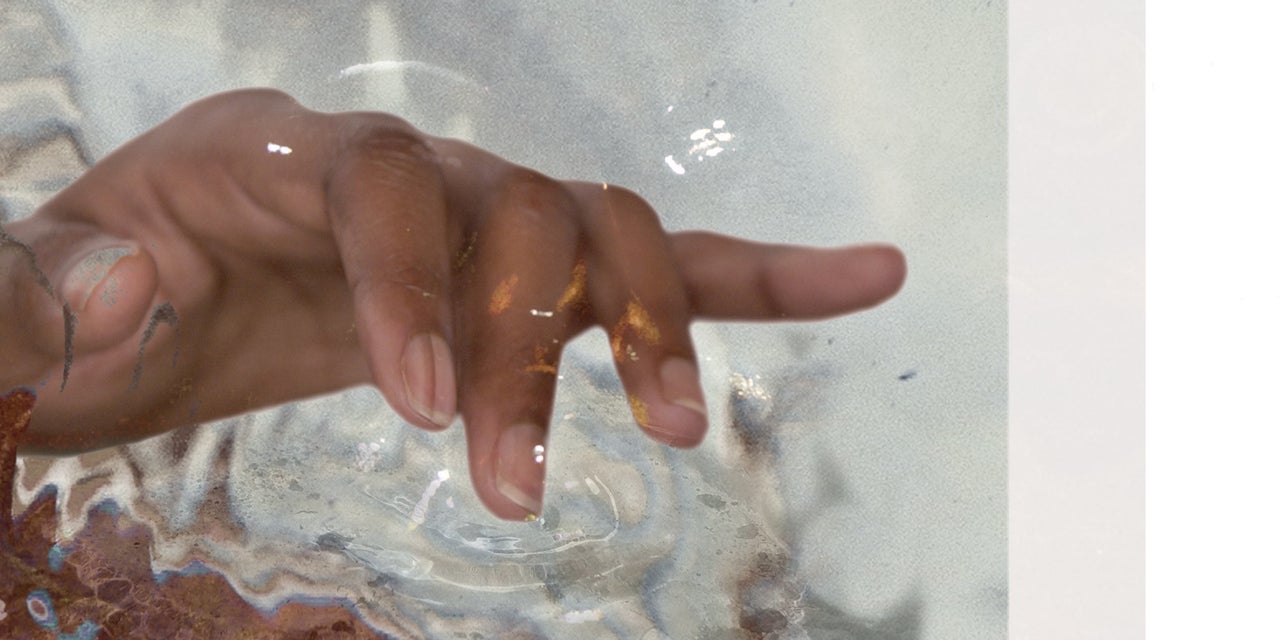
The more Douze researched, the more she understood Mami Wata's popular image is only a single dimension of a figure as ever-shifting as the ocean itself. "Mami Wata's most popular image is as half woman, half aquatic creature, but we quickly discovered that she represents a whole conglomerate of water deities that embody both maleness and femaleness. The multiplicity she represents was very interesting to us."
As women-identified people of color living in New York, Douze and Rosa-Salas were drawn to this multiplicity Mami Wata epitomized. She concretized the complexity so many artists of color are denied when they're pigeonholed according to stereotypes or singular narratives. "Myself as a Puerto Rican, and Dyani being a woman of African descent, our identities are so highly politicized," Rosa-Salas said. "We’ve come to realize there isn’t much room left to embrace our complexity, embrace contradiction, embrace that our identity doesn’t exist in a box. We’re not a monolith in terms of what kinds of work we create. We’re not a monolith in terms of who we are."
Douze and Rosa-Salas resolved to curate a group exhibition featuring all women-identified artists of African descent, revolving around the spirit of Mami Wata. The show, called "Mami," both revolves around water and moves like water, in its expansive range and limitless fluidity. As an exhibition statement says, the show "reflects on the process of discovering the Others within ourselves."
"We really identified with Mami Wata, how she is revered but also feared, like how water brings life but also destruction," Rosa-Salas said. "We were interested in troubling all these binaries and boundaries, both through an artistic practice and just as people existing in the world." Douze added: "We're also looking at water as a symbol that lends itself to a boundaryless, expansive, fluid way of thinking."
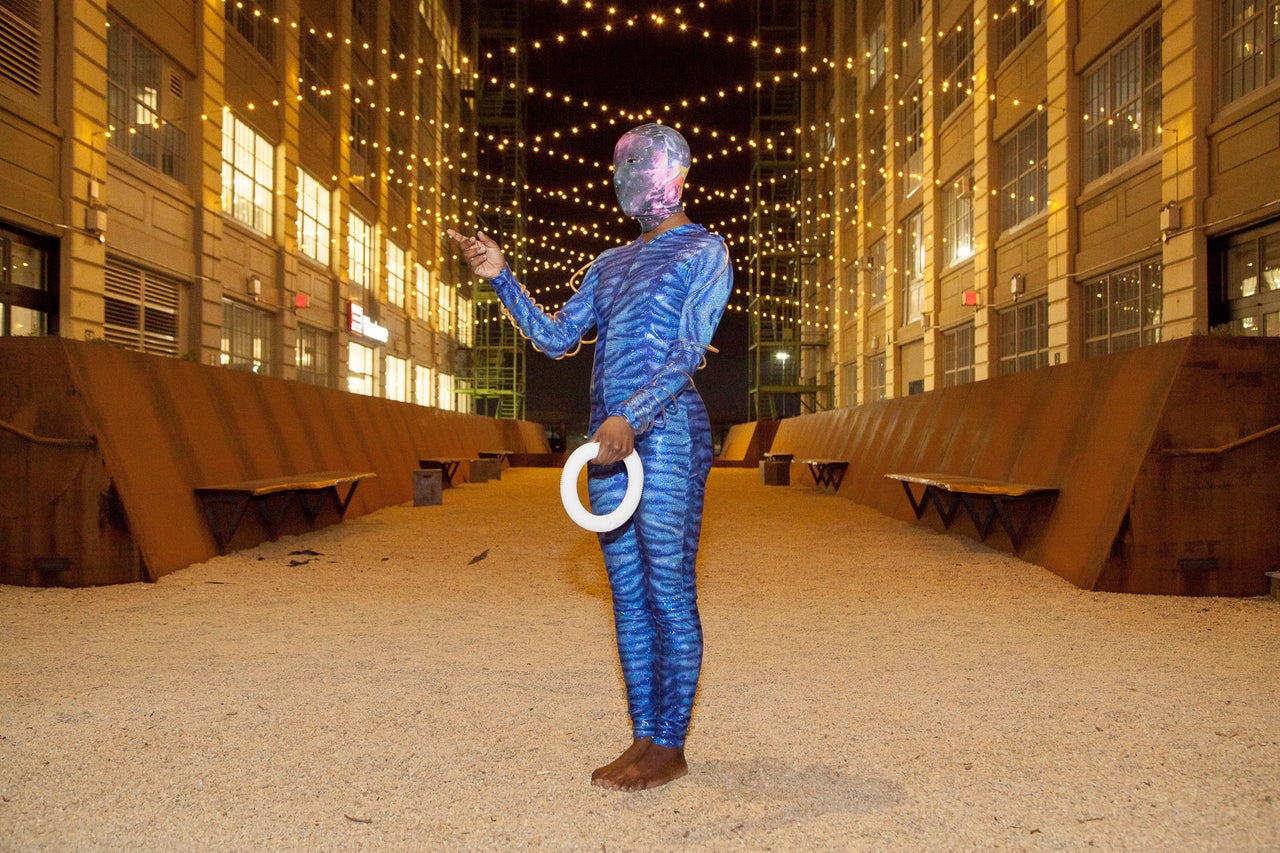
The show will feature artist Salome Asega's "ArtifactID:012," a bodysuit made in collaboration with Ayo Okunseinde that gives the therapeutic sensation of being in water. The artist will also present a virtual reality experience visualizing the world through the perspective of a god, or an orisha, mounting a practicer.
Nona Faustine will exhibit her photo series "White Shoes," in which the photographer captures her naked body at various New York sites once plagued by slavery, from City Hall to the Supreme Court. "Standing at Wall Street at the exact spot where they sold Native and African men, women, and children 150 years ago, I wasn’t able to feel any of the horrific sorrow and pain of the activities that once went on there," Faustine explained in an earlier interview with HuffPost. “Perhaps it was a defense mechanism that wouldn’t allow me to tap into that for fear of crumbling. What I did feel was the energy of New York City, an incredible force. There I found myself at the curtain of time between two eras, past and present. I went into a deep reflection.”
Faustine's series will be rendered into life-size figures and sculptural elements that will take residence in the exhibition space. "By creating these cardboard cutouts of herself, transferring her image onto a life-size, human-ish form, she's also referring to modification of black women’s bodies, and the agency that black women have," Rosa-Salas said. "The power relations that exist when its comes to the black woman’s body."
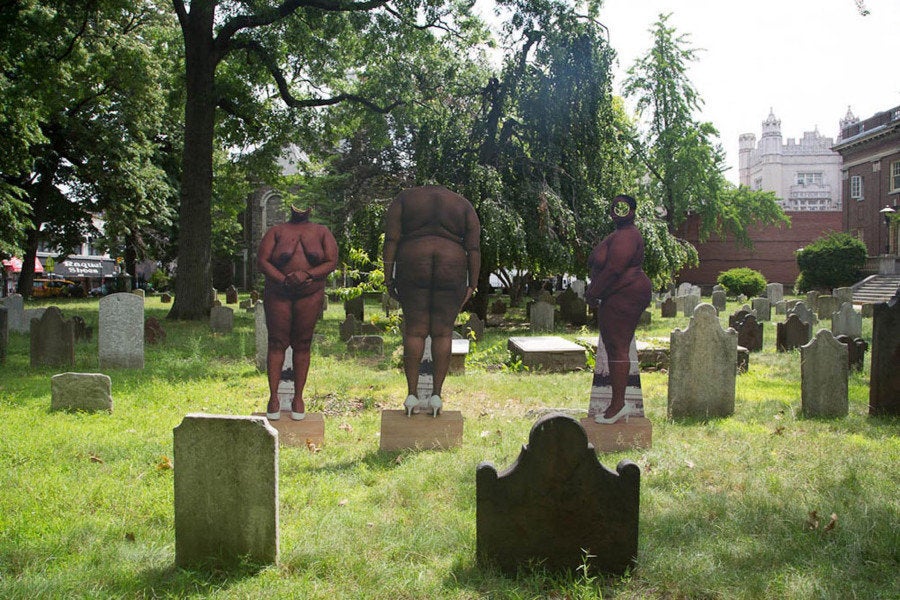
Doreen Garner's installation resembles a medical examination room, featuring sculpture and video that blurs the line between beauty and revulsion. Bodily flesh is juxtaposed with glittering gems, wiry hairs with perfect pearls, jamming the categories of attraction and repulsion, essence and ornament, interior and exterior. Aya Rodriguez-Izumi creates an altar of windows, light features, and sculpture, exemplifying the thrill of discovering oneself, while Rodan Tekle brings an immersive new media installation exploring self-representation through the politics of online annotation.
For Douze and Rosa-Salas, the decision to curate an exhibition composed of all women artists of color was deliberate and necessary. "Our philosophy is FUBU: for us, by us," Douze explained. "We’re making these conversations happen for women of the African diaspora to have a space where they can feel safe and talk about these things."
Despite the current popularity of all-women shows or exhibits organized around identity politics, in the grand scheme of the art world, the numbers are still disheartening: only two percent of MoMA's permanent collection is made up of art by women of color. "Us existing in the art world and carving out spaces where we, as women-identified people of African descent, can create is a political act," Rosa-Salas said. "We have to carve our own spaces."
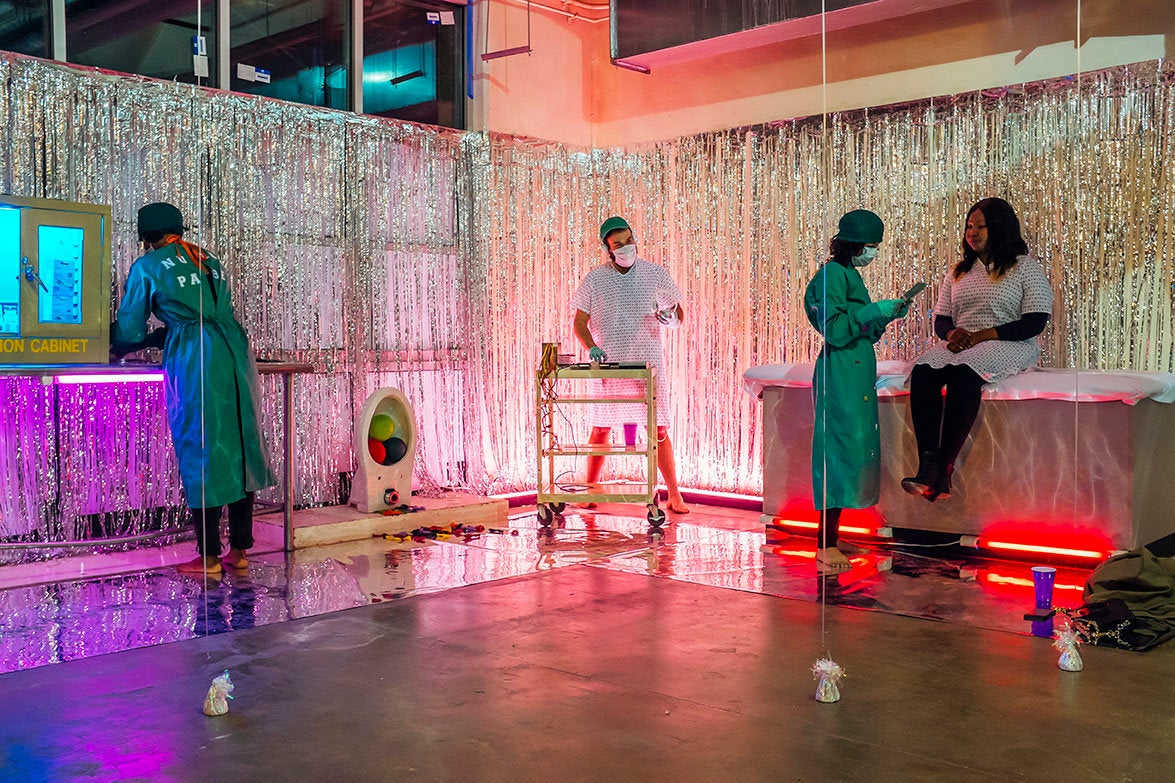
As of now, women's work is not only less visible, but less valued too. While the highest price paid at auction for the work of a living artist is $58.4 million for Jeff Koons' "Balloon Dog," the highest price paid for a woman living artist is only $7.1 million for Yayoi Kusama's "White Number 28."
"I think institutions really need to make a commitment to equal representation across the board, and that means a paradigm shift institutionally about how they value certain work," Rosa-Salas said. "It is a reflection of our culture, devaluing women-identified people in general. That’s just a broader cultural shift that needs to happen. In the meantime, we're claiming a space for exploration and a community for artists that have been devalued in the institutional art world. We have to take it upon ourselves, create our own spaces until we see ourselves reflected."
"Mami" will show at New York City’s Knockdown Center from August 6 to September 5, 2016. Douze and Rosa-Salas are currently raising funds on IndieGogo for programming events, to take place every Saturday throughout the exhibition. Community-centric events are slated to include an opening party, a performance lecture with multimedia artists Salome Asega, Dyani Douze, and Yulan Grant, and a performance featuring the world champion Floyd Little Double Dutch Team. Visit the fundraising page to support the cause and learn more.
